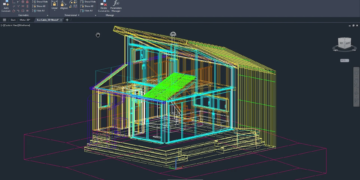The cost of cybercrime will reach $10.5 trillion by 2025. This vast number shows that strong security is essential, especially when dealing with government data.
It is crucial for businesses that work with U.S. government organizations to keep private information safe. Data hacks can cost you money, hurt your image, and even put the safety of the whole country at risk.
NIST 800-171 gives us a way out. Controlled Unclassified Information (CUI) in non-federal systems must be protected by key security standards in this framework.
This post talks about how NIST 800-171 can help you strengthen your security, stay in line for government contracts, and protect yourself from more online dangers.
What Does NIST 800-171 Mean?
NIST 800-171 is a set of security standards that helps protect private government information when non-federal groups handle it.
Created by the National Institute of Standards and Technology (a Commerce Department body), these rules standardize how Controlled Unclassified Information (CUI) must be protected.
Many organizations must follow these rules, including defense firms, IT companies, study groups, and makers working with government agencies. The DFARS rule 252.204-7012 requires NIST 800-171 compliance for many government contracts.
The standard has been changed several times to meet new threats. It aligns better with other security systems and simplifies applications with new requirements and settings.
Key Requirements and Security Fami
NIST 800-171 gives you an organized way to protect private information. Revision 2 has 110 security controls grouped into 14 families, while the latest Revision 3 simplifies this to 97 controls across 17 families.
Let’s look at examples of what these control groups cover:
- Access Control: This limits who can use your systems. Only approved people, processes, or devices should have access, and they should only see what they need for their job. For example, engineers view tech files, while HR staff only see employment records.
- Awareness and Training: Everyone using your systems needs to understand security risks. It means regular training on dangers like hacking, password safety, and how to handle private information.
- Audit and Accountability: You must watch system behavior by making and protecting logs. It helps you spot strange activity, like someone viewing files at odd hours.
These tools give you specific steps to take to meet security goals. While Revision 3 has fewer top-level controls, it often mixes linked standards and adds new ones in areas like Planning and Supply Chain Risk Management.
Your Path to Meeting Requirements
Getting NIST 800-171 compliant follows a straightforward process:
First, do a gap analysis to see where your security methods stand compared to the standard. For example, check if your login rules meet NIST standards.
Next, a system security plan (SSP) will be built, showing how to handle private information. This paper needs regular changes as your security improves.
Develop a Plan of Action and Milestones (POA&M) for any holes found. List exact steps, who’s responsible, and when chores should be done.
Then apply the needed security rules like:
- Multi-factor login
- Data encryption
- Proper access controls
- Regular staff training
Remember that compliance isn’t a one-time job. You must keep watching your systems and changing your plans to meet new threats.
Why NIST 800-171 Compliance Matters
The benefits of complying with the NIST 800-171 guidelines far supersede its compliance protocols.
- Better Security: Regulations strengthen your online security shields. They protect secret records and reduce the risk of data loss.
- Business Advantage: Businesses with a Defense Industrial Base relationship, or interested in government contracts, often face the requirement to comply with these standards. Compliance enables you to obtain these contracts and exhibits your commitment to security to private clients.
- Built Trust: Meeting these standards in security signals to stakeholders that you take care of data in your organization.
- Save Money: While there are immediate costs to install these standards, the benefits of being secure, avoiding legal problems, and maintaining your image far outweigh the costs.
- Better Response: A robust plan for remediation of security allows fast identification and restoration from cyber attacks.
Problems You May Face and How to Solve Them
Meeting NIST 800-171 standards isn’t always easy. Small and mid-sized businesses often deal with limited means and technology skills.
To avoid this, put the most important rules first and consider hiring outside security experts.
Technical factors like encryption and tracking can be complex. Look for experts specializing in NIST compliance and using security tools built for these standards.
Keeping up with new standards takes work. Stay updated through NIST papers and business networks.
Documentation can be exhausting. Use pre-made models for your security goals and action items.
Defining which systems need safety can be tricky. Map where private information lives, and consider separating these tools from your normal network.
Wrapping Up
With cyber attacks still being rampant, strong safeguards for your private information are essential. Although compliance entails some effort, the value is worth it: nurtured security strengths, advanced capability of winning government bids, greater stakeholder confidence, and great monetary gains in the long run.
This is not just about marking all those necessary boxes. It is all about how to lift the performance of your company as a whole. Prevent the learning of your vulnerabilities through a data breach. Start your journey to NIST 800-171 preparedness with immediate gap analysis. Engage security professionals and embed your organization with a strong security mindset.













